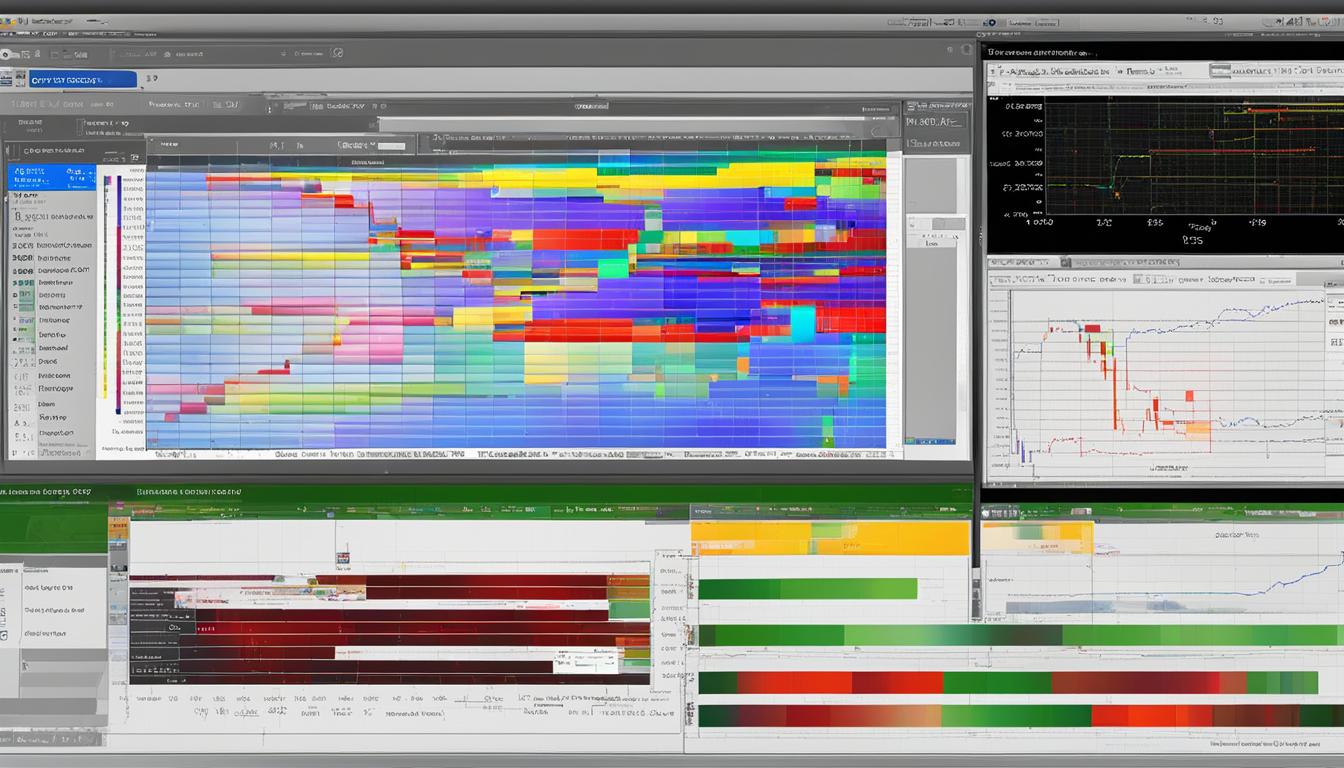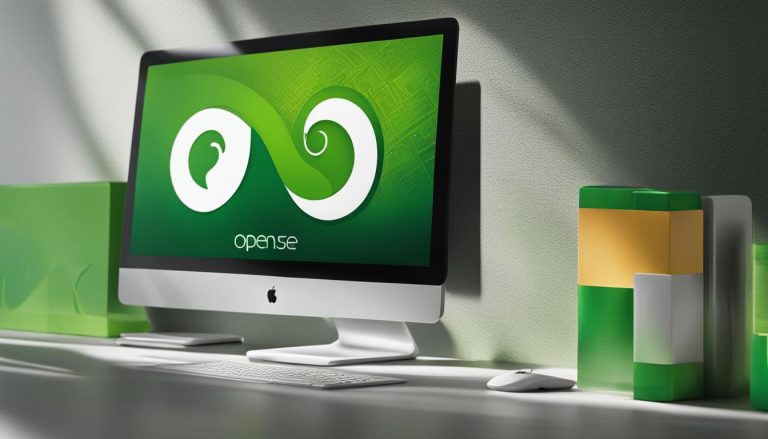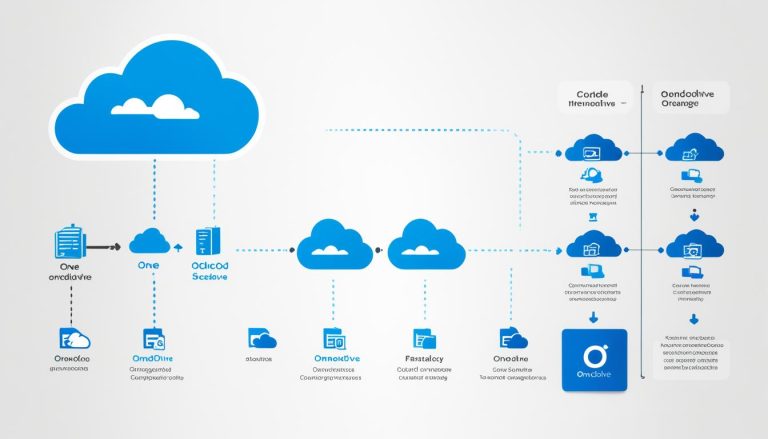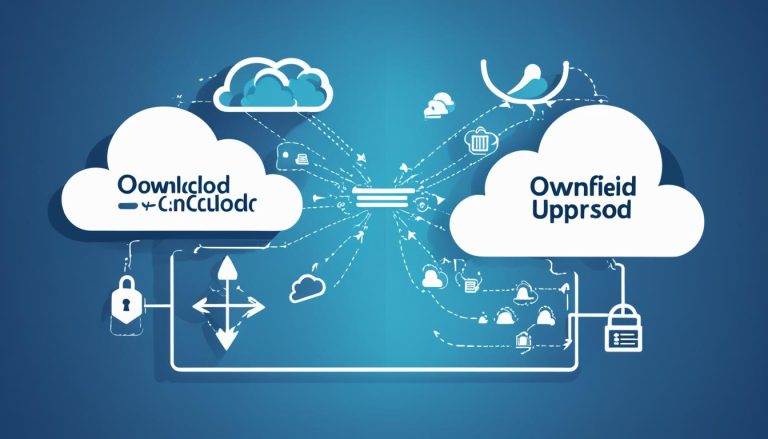Unraveling the Mystery: What is R in Data Analysis & Statistics
Welcome to the fascinating world of R, the programming language that revolutionizes data analysis and statistics. In this article, I will guide you through the fundamentals of R programming and its applications in the field.
But first, let’s answer the question, “What is R?” R is a powerful programming language specifically designed for statistical computing and graphics. It provides a comprehensive range of statistical and graphical techniques, making it an indispensable tool for exploring, analyzing, and visualizing data.
Whether you are a beginner or an experienced data scientist, R offers a user-friendly interface and a vast library of packages to cater to your needs. It’s time to unlock the potential of R and delve into the world of data analysis and statistics!
Key Takeaways:
- R is a programming language for statistical computing and graphics
- It offers a wide range of statistical and graphical techniques
- R is suitable for beginners and experienced users in data science
- It has a user-friendly interface and an extensive library of packages
- R is used for exploring, analyzing, and visualizing data
Introduction to R Programming
When it comes to learning data analysis and statistics, one language that stands out is R. R programming language is known for its simplicity and flexibility, making it an ideal choice for beginners and experienced users alike. With its wide range of functions and packages, R provides an extensive toolkit for data manipulation, analysis, and visualization.
Getting started with R is relatively easy, thanks to its rich set of documentation and tutorials. Whether you are a beginner or have prior programming experience, learning R is within reach. By mastering the basics of R programming, you can unlock the power of statistical computing and enhance your data analysis skills.
To begin your journey into the world of R programming, it is essential to understand the syntax, data types, and functions of the language. With practice and hands-on experience, you can gain confidence in using R for real-world data analysis scenarios. By leveraging the extensive library of packages and exploring the vast R community, you can continuously expand your knowledge and keep up with the latest advancements in the field.
In the next section, we will explore why R is a popular choice for data analysis and delve deeper into the key features that set it apart. So, buckle up and get ready to uncover the potential of R programming!
Table: R Language Basics
| Data Types | Functions | Packages |
|---|---|---|
| Numeric | mean() | dplyr |
| Character | paste() | ggplot2 |
| Logical | ifelse() | tidyr |
Why Use R for Data Analysis
R is a powerful programming language that offers numerous advantages for data analysis. It provides a comprehensive library of packages and functions specifically designed for statistical computing and data manipulation. Whether you’re a beginner or an experienced data analyst, R is an excellent choice due to its versatility and extensive capabilities.
One of the main reasons to use R for data analysis is its vast library of packages. These packages cover a wide range of statistical techniques, data visualization tools, and data manipulation functions. They allow you to easily explore, analyze, and visualize complex datasets, making it easier to derive meaningful insights from your data.
R is also well-known for its ability to handle large datasets efficiently. Its optimized algorithms and data structures enable you to process and analyze massive amounts of data without compromising performance. Whether you’re working with millions of rows or gigabytes of data, R can handle it with ease.
Another advantage of using R for data analysis is its strong community support. The R community is vibrant and active, with a wealth of resources available for learning and troubleshooting. Online forums, user groups, and mailing lists provide a platform for users to share knowledge, ask questions, and seek advice. This collaborative environment fosters continuous learning and growth within the R community.
Table: R vs. Other Programming Languages for Data Analysis
| Criteria | R | Python | SQL |
|---|---|---|---|
| Data Manipulation | Extensive library of packages and functions | Requires additional libraries | Relational database-specific |
| Data Visualization | Rich set of plotting and graphing options | Requires additional libraries | Basic plotting capabilities |
| Statistical Modeling | Built-in statistical functions and modeling tools | Requires additional libraries | Not suitable for complex modeling |
| Community Support | Active and supportive community | Large community, but more diverse | Varies by specific database |
As shown in the table above, R has distinct advantages compared to other programming languages commonly used for data analysis. Its extensive library of packages, rich data visualization capabilities, and built-in statistical modeling tools make it an ideal choice for data analysts and researchers.
Key Features of R Programming
When it comes to data analysis, R programming language offers a plethora of key features that set it apart from other programming languages. Its versatility and extensive library of packages make it a popular choice among data analysts and statisticians.
Data Types
R programming language supports various data types, including numeric, character, and logical. This allows users to effectively handle different types of data in their analysis. Whether you’re working with numbers, text, or boolean values, R has the flexibility to accommodate your needs.
Statistical Functions
R offers a wide range of statistical functions that enable users to perform complex analyses on their data. Whether you need to calculate mean, median, or standard deviation, R provides built-in functions that make statistical calculations a breeze. Additionally, R’s library of packages extends its statistical capabilities even further, allowing users to access advanced statistical techniques.
Data Visualization
Effective data visualization is crucial for conveying insights and patterns in data. R programming language excels in this aspect, offering a plethora of tools and packages for creating high-quality plots and graphs. Whether you need to create bar charts, scatter plots, or heatmaps, R provides the necessary functions to bring your data to life.
Open Source
An important advantage of R is that it is an open-source language, which means it is freely available for anyone to use and modify. This enables users to customize R according to their specific needs, ensuring that it aligns with their data analysis requirements. The open-source nature of R also fosters a vibrant community of users and developers, who contribute to the continuous improvement and development of the language.
With its robust set of features, R programming language provides a powerful and flexible environment for data analysis. Whether you’re a beginner or an experienced data analyst, learning R can open up a world of possibilities in the field of data analysis and statistics.
Applications of R in Data Analysis
R programming language is widely used in various fields for data analysis. Its versatility and extensive library of packages make it a powerful tool for extracting insights from data. Let’s explore some of the key applications of R in data analysis.
Data Analysis in Academic Research
R is extensively used in academic research for statistical analysis and modeling. Researchers leverage the rich set of statistical functions and packages available in R to analyze data, test hypotheses, and uncover meaningful patterns. The flexibility of R allows researchers to tailor their analyses to specific research questions, making it a preferred choice in the academic community.
Data Analysis in Healthcare
In the healthcare industry, R is utilized for clinical data analysis and medical research. Healthcare professionals and researchers leverage R’s powerful statistical and visualization capabilities to analyze patient data, conduct epidemiological studies, and develop predictive models. R also enables the exploration of electronic health records, enabling insights into patient outcomes and treatment effectiveness.
Data Analysis in Finance and Marketing
R is increasingly employed in the finance and marketing sectors for data analysis. In finance, R is used for risk analysis, portfolio optimization, and financial modeling. It enables professionals to make data-driven decisions by analyzing market trends, evaluating investment strategies, and assessing financial risks. In marketing, R is utilized for customer segmentation, market research, and predictive modeling, allowing businesses to better understand consumer behavior and drive targeted marketing campaigns.
| Application | Use Case |
|---|---|
| Academic Research | Statistical analysis and modeling in research |
| Healthcare | Clinical data analysis and medical research |
| Finance | Risk analysis, portfolio optimization, financial modeling |
| Marketing | Customer segmentation, market research, predictive modeling |
The applications of R in data analysis extend beyond these industries, with its usage expanding rapidly in fields such as social sciences, engineering, and environmental studies. Its flexibility, vast ecosystem of packages, and active community contribute to its widespread adoption and continued growth in the field of data analysis.
Advantages of Using R for Data Analysis
When it comes to data analysis, the R programming language offers several advantages that make it a popular choice among data scientists and statisticians. Let’s explore some of the key benefits of using R for data analysis.
Extensive Library of Packages
R has a vast library of packages that provide a wide range of functions and tools for data manipulation, analysis, and visualization. These packages cover various aspects of data analysis, including statistical modeling, machine learning, data cleaning, and more. With such a rich set of resources, R allows users to leverage existing solutions and quickly implement complex analyses. Whether you need to perform linear regression, create interactive visualizations, or conduct advanced statistical tests, you can find a package in R that meets your needs.
Strong Community Support
R has a vibrant community of users and developers who contribute to its development and provide support to fellow R enthusiasts. The open-source nature of R encourages collaboration and knowledge sharing. Whether you have a question about a specific function or need advice on best practices, you can turn to the R community for help. Online forums, mailing lists, and social media groups are excellent resources for connecting with fellow R users, getting answers to your questions, and learning from experienced practitioners.
Open-Source and Customization
One of the greatest advantages of R is its open-source nature. This means that R is freely available and can be customized to suit your specific requirements. You can modify existing packages or create new ones to extend R’s functionality and address unique challenges. This flexibility allows you to tailor R to your particular data analysis needs, making it a powerful and versatile tool. Furthermore, the open-source nature of R ensures that it is constantly evolving and improving, with new packages and updates being released regularly.
Overall, R offers a comprehensive and flexible environment for data analysis. Its extensive library of packages, strong community support, and open-source nature make it an ideal choice for both beginners and experienced users. By harnessing the power of R, you can unlock the potential of your data and gain valuable insights that drive informed decision-making.
Getting Started with R Programming
If you’re interested in learning R programming, you’re in the right place. R is a powerful language for data analysis and statistics, and mastering it can open up a world of possibilities. Whether you’re a beginner or already have some programming experience, getting started with R is fairly straightforward. Here’s a step-by-step guide to help you begin your journey into the world of R programming.
Step 1: Download and Install R
The first step to getting started with R is to download and install the R software. You can find the official website and download the latest version of R for your operating system. The installation process is simple and intuitive, just follow the instructions provided.
Step 2: Explore R Documentation and Resources
Once you have R installed, it’s helpful to explore the documentation and resources available. The R community offers a wide range of tutorials, books, and online courses that can help you learn the basics and advance your skills. Familiarize yourself with the syntax, functions, and data types in R to build a solid foundation.
Step 3: Practice with Examples and Real-World Datasets
Learning R programming involves hands-on practice. Start by working with simple examples and gradually progress to more complex projects. Real-world datasets are a great way to gain practical experience and apply your knowledge. Use R’s functions and packages to manipulate, analyze, and visualize the data. The more you practice, the more comfortable you’ll become with R programming.
Getting started with R programming is an exciting journey. By following these steps and dedicating time to practice, you’ll soon develop the skills needed to effectively analyze and visualize data using R. So, don’t hesitate, dive into the world of R programming today and unlock the potential of data analysis and statistics!
Tips and Tricks for Effective R Programming
As you continue your journey into learning R programming, there are several tips and tricks that can help you become more proficient and efficient in using the language. By incorporating these strategies into your practice, you can enhance your skills and make the most out of your data analysis projects.
Regular Practice and Real-World Datasets
To improve your R programming skills, it is essential to practice regularly and work on various datasets. By dedicating consistent time and effort, you can gain hands-on experience and become familiar with different data structures, functions, and packages. Real-world datasets provide valuable opportunities to apply your knowledge and develop practical skills in data analysis using R.
Explore the R Documentation and Package Descriptions
The R programming language has an extensive library of packages, each with its own set of functions and tools. To make the most of these resources, take the time to explore the R documentation and package descriptions. Understanding the available functions and their capabilities will help you leverage the power of R for your data analysis tasks.
Engage with the R Community
Being part of the R community can greatly benefit your learning journey. Join forums, online communities, and attend meetups to connect with experienced R users. Engaging with the community provides opportunities to learn from others, ask questions, and share your knowledge. You can gain valuable insights, discover new approaches, and receive support as you continue to expand your R programming skills.
| Tips and Tricks for Effective R Programming |
|---|
| Regular practice and work on real-world datasets |
| Explore the R documentation and package descriptions |
| Engage with the R community through forums and meetups |
By incorporating these tips and tricks into your R programming practice, you can enhance your skills and become a more effective data analyst. Remember to stay curious, continue exploring new techniques, and never hesitate to seek help or guidance when needed. As you gain experience and confidence, you will unlock the full potential of R programming for your data analysis endeavors.

Common Challenges in R Programming
While learning R programming can be an exciting journey, it can also present some challenges along the way. One of the common challenges is the learning curve, especially for individuals with little or no programming experience. R is a powerful language with its own syntax and conventions, which can take time to fully grasp. However, with dedication and practice, even beginners can become proficient in R programming.
Another challenge in R programming is troubleshooting errors and finding bugs in your code. As with any programming language, it is common to encounter errors while writing and executing code. The key is to approach these errors systematically, using error messages and debugging techniques to identify and fix the problem. R also has a vast community of users who are willing to help, so don’t hesitate to seek assistance from online forums and communities.
Staying updated with the latest versions of R and its packages can also be a challenge. R is a dynamic language with frequent updates and new packages being developed. It is important to stay informed about these updates to take advantage of new features, bug fixes, and performance improvements. Regularly checking for updates and exploring the documentation can help you stay up to date with the latest advancements in R programming.
Key Challenges in R Programming:
- Learning curve for beginners with no programming experience.
- Troubleshooting errors and finding bugs in code.
- Staying updated with the latest versions of R and its packages.
Overcoming these challenges requires patience, persistence, and a willingness to continuously learn and improve. By practicing regularly, seeking help from the community, and staying updated with the latest developments, you can overcome these challenges and become proficient in R programming.
| Challenge | Solution |
|---|---|
| Learning curve for beginners with no programming experience | Dedicate time to learning the basics, follow tutorials and practice with real-world datasets. |
| Troubleshooting errors and finding bugs in code | Utilize error messages, debugging techniques, and seek help from online forums and communities. |
| Staying updated with the latest versions of R and its packages | Regularly check for updates, read documentation, and explore new features and improvements. |
Resources for Learning R Programming
When it comes to learning R programming, there are plenty of resources available that can help you on your journey. Whether you’re a beginner looking to grasp the basics or an experienced programmer seeking to expand your knowledge, these resources can provide valuable insights and guidance.
Online platforms such as Coursera, edX, and DataCamp offer a wide range of courses and tutorials specifically designed for learning R programming. These platforms provide structured learning paths and hands-on exercises that allow you to practice your skills in a practical and interactive manner.
Books and websites dedicated to R programming are also excellent resources for learning. Some popular titles include “R for Data Science” by Hadley Wickham and Garrett Grolemund, and “Advanced R” by Hadley Wickham. These books cover various topics, from the basics to advanced concepts, and provide detailed explanations and examples to enhance your understanding.
Joining online communities, forums, and meetups can also be beneficial for learning R programming. These platforms allow you to connect with experienced R users, ask questions, and share knowledge and insights. Participating in discussions and solving real-world problems can further enhance your skills and provide practical experience.
| Resource | Description |
|---|---|
| Coursera | An online learning platform that offers a variety of R programming courses, ranging from beginner to advanced levels. Courses are taught by industry professionals and cover a wide range of topics. |
| edX | Another online learning platform that offers R programming courses from renowned universities and organizations. Courses are self-paced and provide hands-on exercises to reinforce learning. |
| DataCamp | A platform specifically dedicated to data science and programming, offering interactive R tutorials and courses. DataCamp focuses on practical, real-world examples to help you apply your R skills. |
| Books | Popular books on R programming include “R for Data Science” by Hadley Wickham and Garrett Grolemund, and “Advanced R” by Hadley Wickham. These books provide comprehensive coverage of R programming concepts and techniques. |
| Online Communities | Joining online communities such as the RStudio Community and Stack Overflow can provide opportunities to connect with experienced R users, ask questions, and seek guidance. |
Conclusion
After exploring the world of R programming, I have come to appreciate its power and versatility in data analysis and statistics. The R programming language provides a wide range of functions and tools that allow users to manipulate, analyze, and visualize data effectively. Whether you are a beginner or an experienced data scientist, learning R can greatly enhance your data analysis skills.
One of the key advantages of R is its extensive library of packages, which cover various statistical techniques and data manipulation methods. These packages make it easier to perform complex analyses and create high-quality visualizations. Additionally, the strong community of R users and developers provides invaluable support and resources for learning and troubleshooting.
By mastering the basics of R programming, you can unlock the potential of data analysis and statistics. R offers a user-friendly interface and comprehensive documentation, making it accessible to individuals with varying levels of programming experience. So, don’t hesitate to dive into the world of R programming and start exploring the endless possibilities it offers in the field of data analysis.
FAQ
What is R?
R is a programming language used for statistical computing and graphics.
What is R used for?
R is used for data analysis and statistics.
Is R suitable for beginners?
Yes, R is suitable for both beginners and experienced users in the field of data science.
Why is R popular for data analysis?
R is popular for data analysis due to its extensive library of packages and its ability to handle large datasets.
Where is R commonly used?
R is commonly used in academic research, healthcare, finance, marketing, and more.
How can I get started with R programming?
You can download and install the R software from the official website.
How can I improve my R programming skills?
It is important to practice regularly, explore the R documentation, and participate in the R community.
What resources are available for learning R programming?
Online platforms, books, websites, and online communities provide resources for learning R programming.
What are the advantages of using R for data analysis?
Some advantages of using R include its extensive library of packages and the support of a strong community.
What are the common challenges in R programming?
The learning curve and troubleshooting errors are common challenges in R programming.
What is the conclusion about R programming?
R programming is a powerful tool for data analysis and statistics that offers a wide range of functions and tools.
- About the Author
- Latest Posts
Mark is a senior content editor at Text-Center.com and has more than 20 years of experience with linux and windows operating systems. He also writes for Biteno.com






